BMW > M3 (E90/E92/E93) > C) CHASSIS, BRAKES, SUSPENSION & STEERING UPGRADES > - Coilover Suspension / Height Adjustable Spring Kits Etc > OHLINS SUSPENSION
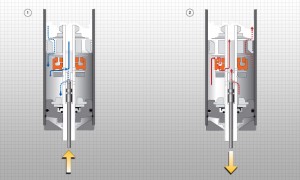
Click to Enlarge
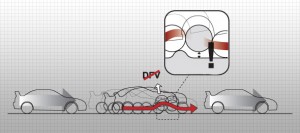
Click to Enlarge
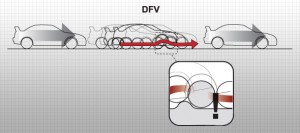
Click to Enlarge
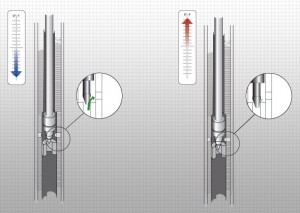
Click to Enlarge
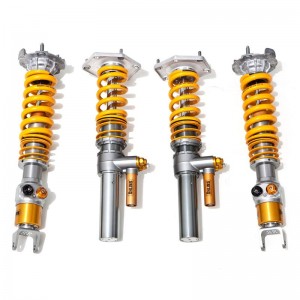
Click to Enlarge
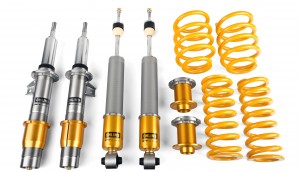
Click to Enlarge
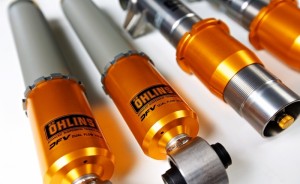
Click to Enlarge
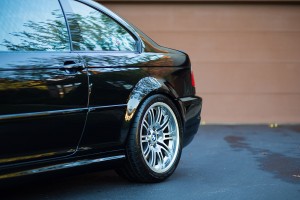
Click to Enlarge
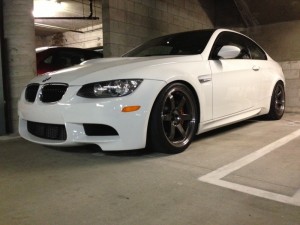
Click to Enlarge
Description
This page describes the general details and specifications for Ohlins Road & Track suspension, to see info / purchase your specific model kit please see the “VARIATIONS” SECTION BY USING THE RED Variations button near top right of this page, and scroll down until you reach your application.
We also supply high quality front and / or rear camber adjustment hardware to complement these coilovers should you require, please call us or E-Mail us, also refer to our GROUND CONTROL product brand sections.
ABOUT OHLINS
Öhlins have been a major player on the motorsport scene for well over 30 years. Ohlins products – and successes – span almost every genre of automotive excellence on both 2 wheels and 4. The company was founded back in 1976 by Kenth Öhlin and amazingly, in this age of global merger and takeover, Kenth still holds the reins at the Swedish HQ. That enthusiasm and vision that transformed Kenth’s early designs into his first World Championship Title in 1978 are still exactly the same, it’s just that these days, his office is a little bigger… but now, with over 200 World Championship trophies to accommodate, it has to be!
DFV VALVING TECHNOLOGY
So what is DFV? It is Dual Flow Valve technology – and it sets Ohlins apart from its competitors. Only Öhlins has DFV technology on its road and track products.
With DFV, the dual flow valve gives the same characteristics on rebound as it does on compression, thanks to the damper fluid having a consistent path of flow in both directions. This means that the wheel and tyre can quickly and effectively resume their important position back on the ground, providing grip and traction. The new Öhlins R&T range uses DFV technology on every single fitment, making it the perfect upgrade for the enthusiast that needs comfort and agility in the one unit.
Figure 1: (Compression flow) At low shaft speeds, oil flows mostly through the shaft jet bleed (lower dotted arrow). At higher shaft speeds, oil flows mostly through the compression ports in the piston (upper dotted arrow). At very high shaft speeds, or during sudden shaft accelerations, oil can also escape through the compression ports in the DFV, increasing comfort.
Figure 2: (Rebound flow) At low shaft speeds, oil flows mostly through the shaft jet bleed (lower dotted arrow). At higher shaft speeds, oil flows mostly through the rebound ports in the piston (upper dotted arrow). At very high shaft speeds, or during sudden shaft accelerations, oil can also escape through the rebound ports in the DFV, maintaining tyre contact with the road.
Because DFV opens more quickly and easily on minor road imperfections, ride comfort is surprisingly supple and more akin to an OEM strut than a coilover set-up. Over undulating surfaces, the compliancy of the R&T units allows the car to crest bumps and pot-holes, whilst still keep stable and in control. Traction is always maintained at its optimum level. When comparing suspension, why settle for second best?
Figure 3: (Vehicle – no DFV) Without DFV the oil can not flow through the piston quickly enough on the rebound stroke after hitting a bump, so the tyre is not able to stay in contact with the road.
Figure 4: (Vehicle – DFV technique) The DFV valve opens, letting the oil flow quicker through the piston on the rebound stroke after hitting a bump, enabling the tyre to stay in contact with the road.
When adjusting ride height on coilover units, it’s worth comparing how it’s done. On many inferior designs, height is adjusted by raising or lowering the lower spring platform. This has the effect of compressing or extending the spring, which can limit the suspension travel that may cause topping out. The Öhlins method is to leave the spring seat in its perfect position, whilst the lower flange spins easily on the threaded body, to allow you to adjust with absolute precision whilst maintaining the perfect characteristics that we took so long to design in! Once you’ve set it all up, the adjuster simply locks off to maintain your exact settings.
Dampers will get hot. That’s one thing that you can be sure of. As the piston moves within the damper, it generates friction – and therefore, heat. Although you can’t stop heat, you can deal with it, and this is yet another way that Öhlins differs from the competition. As the heat increases, the viscosity of the damper fluid can change, altering the car’s handling characteristics. Our unique needle bleed valve expands with temperature, closing the gap that the fluid travels through, maintaining a consistent damping rate. The best thing of all? You won’t even notice! All you’ll feel is that the car responds consistently, lap after lap, turn after turn. Allowing you to concentrate on braking points and apexes whilst the Öhlins technology takes care of the damping.
Figure 5: Thermal Expansion
These kits all work well ‘out of the box’, but there’s still plenty of adjustment for you to set things your way. You like stiff and reactive? Or soft and forgiving? It’s all there. Too much low speed rebound damping can have an adverse effect on grip, so the easily accessible adjuster at the base of the Öhlins units allows small, but positive increments of fine tuning, so you can take into account every single parameter. Sounds complicated? Nothing could be further for the truth. Just a few clicks either way from our factory settings will soon have your car responding precisely to your inputs and driving style.
Selected Road & Track McPherson struts also feature camber adjustable upper and lower mounts to give you the possibility to fine tune your vehicle for the right occasion – whether you want to go for a ride in your local area or take your car for a spin at the track on a weekend.
Vehicles provided for;
- 1 series - E82, F20
- 2 series - M2 F87
- 3 series - E36 M3, E36 Compact
- 3 series - E46 M3, E46 non M cars
- 3 series - E90, E92 M3
- 3 series - F30 non M cars
- 3 series - F80
- 4 series - M4 F82
- Z series - E89 Z4.
Please contact us for ordering.
Estimated Volumetric Shipping Weight : 10.00 Kg
We also supply high quality front and / or rear camber adjustment hardware to complement these coilovers should you require, please call us or E-Mail us, also refer to our GROUND CONTROL product brand sections.
ABOUT OHLINS
Öhlins have been a major player on the motorsport scene for well over 30 years. Ohlins products – and successes – span almost every genre of automotive excellence on both 2 wheels and 4. The company was founded back in 1976 by Kenth Öhlin and amazingly, in this age of global merger and takeover, Kenth still holds the reins at the Swedish HQ. That enthusiasm and vision that transformed Kenth’s early designs into his first World Championship Title in 1978 are still exactly the same, it’s just that these days, his office is a little bigger… but now, with over 200 World Championship trophies to accommodate, it has to be!
DFV VALVING TECHNOLOGY
So what is DFV? It is Dual Flow Valve technology – and it sets Ohlins apart from its competitors. Only Öhlins has DFV technology on its road and track products.
With DFV, the dual flow valve gives the same characteristics on rebound as it does on compression, thanks to the damper fluid having a consistent path of flow in both directions. This means that the wheel and tyre can quickly and effectively resume their important position back on the ground, providing grip and traction. The new Öhlins R&T range uses DFV technology on every single fitment, making it the perfect upgrade for the enthusiast that needs comfort and agility in the one unit.
Figure 1: (Compression flow) At low shaft speeds, oil flows mostly through the shaft jet bleed (lower dotted arrow). At higher shaft speeds, oil flows mostly through the compression ports in the piston (upper dotted arrow). At very high shaft speeds, or during sudden shaft accelerations, oil can also escape through the compression ports in the DFV, increasing comfort.
Figure 2: (Rebound flow) At low shaft speeds, oil flows mostly through the shaft jet bleed (lower dotted arrow). At higher shaft speeds, oil flows mostly through the rebound ports in the piston (upper dotted arrow). At very high shaft speeds, or during sudden shaft accelerations, oil can also escape through the rebound ports in the DFV, maintaining tyre contact with the road.
Because DFV opens more quickly and easily on minor road imperfections, ride comfort is surprisingly supple and more akin to an OEM strut than a coilover set-up. Over undulating surfaces, the compliancy of the R&T units allows the car to crest bumps and pot-holes, whilst still keep stable and in control. Traction is always maintained at its optimum level. When comparing suspension, why settle for second best?
Figure 3: (Vehicle – no DFV) Without DFV the oil can not flow through the piston quickly enough on the rebound stroke after hitting a bump, so the tyre is not able to stay in contact with the road.
Figure 4: (Vehicle – DFV technique) The DFV valve opens, letting the oil flow quicker through the piston on the rebound stroke after hitting a bump, enabling the tyre to stay in contact with the road.
When adjusting ride height on coilover units, it’s worth comparing how it’s done. On many inferior designs, height is adjusted by raising or lowering the lower spring platform. This has the effect of compressing or extending the spring, which can limit the suspension travel that may cause topping out. The Öhlins method is to leave the spring seat in its perfect position, whilst the lower flange spins easily on the threaded body, to allow you to adjust with absolute precision whilst maintaining the perfect characteristics that we took so long to design in! Once you’ve set it all up, the adjuster simply locks off to maintain your exact settings.
Dampers will get hot. That’s one thing that you can be sure of. As the piston moves within the damper, it generates friction – and therefore, heat. Although you can’t stop heat, you can deal with it, and this is yet another way that Öhlins differs from the competition. As the heat increases, the viscosity of the damper fluid can change, altering the car’s handling characteristics. Our unique needle bleed valve expands with temperature, closing the gap that the fluid travels through, maintaining a consistent damping rate. The best thing of all? You won’t even notice! All you’ll feel is that the car responds consistently, lap after lap, turn after turn. Allowing you to concentrate on braking points and apexes whilst the Öhlins technology takes care of the damping.
Figure 5: Thermal Expansion
These kits all work well ‘out of the box’, but there’s still plenty of adjustment for you to set things your way. You like stiff and reactive? Or soft and forgiving? It’s all there. Too much low speed rebound damping can have an adverse effect on grip, so the easily accessible adjuster at the base of the Öhlins units allows small, but positive increments of fine tuning, so you can take into account every single parameter. Sounds complicated? Nothing could be further for the truth. Just a few clicks either way from our factory settings will soon have your car responding precisely to your inputs and driving style.
Selected Road & Track McPherson struts also feature camber adjustable upper and lower mounts to give you the possibility to fine tune your vehicle for the right occasion – whether you want to go for a ride in your local area or take your car for a spin at the track on a weekend.
Vehicles provided for;
- 1 series - E82, F20
- 2 series - M2 F87
- 3 series - E36 M3, E36 Compact
- 3 series - E46 M3, E46 non M cars
- 3 series - E90, E92 M3
- 3 series - F30 non M cars
- 3 series - F80
- 4 series - M4 F82
- Z series - E89 Z4.
Please contact us for ordering.
Estimated Volumetric Shipping Weight : 10.00 Kg

